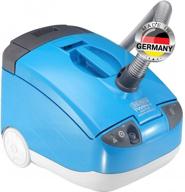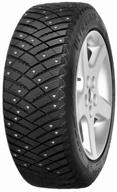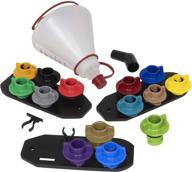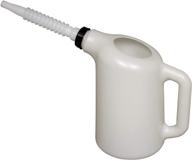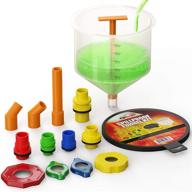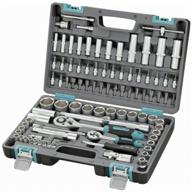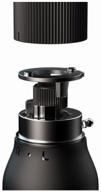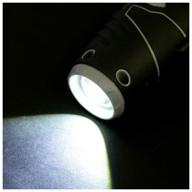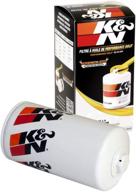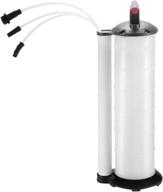Similar products
DIY Oil Changes: Everything You Need to Know
Are you struggling to change your own oil? Changing your vehicle's oil yourself can save you money and allow you to stay on top of this important maintenance task. However, to do it properly, you need the right tools and knowledge. This guide will provide you with everything you need to start changing your oil like a pro.
Top products in 🛢️ Oil System Tools
Why Change Your Own Oil?
Here are some of the key benefits of changing your own oil:
- Save money - Shops charge $40 or more for a basic oil change. Do it yourself and spend less than $25 on supplies.
- Convenience - Skip the wait and hassle of taking your car to a shop. Change it in your own garage or driveway.
- Peace of mind - You can ensure it's done properly and avoid complications from rushed oil changes.
- Know your vehicle - Get familiar with your engine and different fluids.
Oil Change Tools
An oil change requires a few key tools:
- Oil filter wrench - Allows you to remove the old oil filter. Choose the correct size for your vehicle.
- Drain pan - Catches old oil as it drains from engine. Look for one with at least 4-6 quart capacity.
- Funnel - For cleanly pouring new oil into the fill hole. A flexible spout helps.
- Ratchet and socket - For removing drain plug. Use proper size for your vehicle.
- Rags - For cleaning up spills and drips.
- Jack and jack stands - If you don't have a lift, you'll need these to safely raise the vehicle.
You can buy individual tools, but it's often cheaper and more convenient to purchase an oil change kit that contains everything you need.
Step-by-Step Oil Change Instructions
Once you've gathered the proper tools, follow these steps:
- Park your vehicle on a flat surface and apply parking brake.
- Jack up the front of the vehicle and place jack stands under appropriate spots.
- Locate oil drain plug under vehicle (usually near front center). Place drain pan underneath.
- Use your socket/ratchet to loosen drain plug. Allow oil to fully drain into pan.
- Replace and tighten drain plug.
- Locate oil filter (also centered under vehicle). Use oil filter wrench to remove it.
- Use rag to clean mounting surface where new filter will go.
- Lubricate gasket on new filter with fresh oil. Screw it on by hand until tight.
- Locate oil fill cap on top of engine. Fill with correct type/amount of new oil through funnel.
- Replace oil fill cap and check dipstick to verify oil level.
- Clean up any spills and dispose of old filter/oil properly.
Consult your vehicle owner's manual if you need specific oil type, filter numbers, or torque specs.
DIY Oil Changes Are Easy
With the right preparation and tools, changing your own oil is an easy way to maintain your vehicle and save money. Follow the steps above and you'll be handling this routine chore yourself. Just be sure to dispose of the oil properly and reset any maintenance lights in your vehicle.
Essential Oil System Tools for DIY Oil Changes
Changing your own oil requires having the right tools for the job. Here are some of the most important oil system tools to have in your toolbox when tackling DIY oil changes:
Oil Filter Wrenches
Oil filter wrenches grip and remove screw-on oil filters. There are a few types:
- Banded wrench - Loop design fits around the filter.
- Cup wrench - Circular wrench fits over the end of the filter.
- Pliers wrench - Uses adjustable jaws to grip filter.
Ensure you choose the correct wrench size and design for your vehicle's filter. The wrench needs to fit tightly to prevent slipping.
Oil Drain Plugs and Sockets
The drain plug and socket allow used oil to drain from the engine. Most plugs are 14mm or 3/4 inch, but size can vary.
- Use a six-point socket for best grip on the plug.
- Extender and swivel sockets make access easier on some vehicles.
- Avoid overtightening the plug when re-installing.
Oil Drain Pans
Drain pans catch used oil as it drains from the engine:
- Minimum 4 quart capacity, but bigger is better.
- Low profile design can fit under low ground clearance vehicles.
- Foldable plastic drain pans are inexpensive and easy to store.
Position the drain pan correctly to avoid spills during oil changes.
Another interesting products
Oil Funnels
Funnels allow clean pouring of new oil into the engine:
- Wide mouth and flexible spout design make adding oil easy.
- Built-in screens filter out debris.
- Long spouts help reach deep oil fill openings.
Select a sturdy funnel designed to handle hot oils.
Having the right oil system tools makes DIY oil changes much simpler. Invest in quality tools suited for your vehicle.Choosing the Right Oil Filter Wrench
Oil filter wrenches are essential tools for removing oil filters during oil changes. With the right wrench, you can loosen even the tightest oil filters quickly and easily. Here's what to look for when selecting an oil filter wrench:
Types of Oil Filter Wrenches
- Banded wrench - A metal band that loops around the oil filter to grip it.
- Cup wrench - A cup-shaped wrench that fits over the end of the oil filter.
- Pliers wrench - Uses adjustable jaws to clamp down on and grip the filter.
Key Features
- Durability - Choose thick, hardened steel that won't bend, warp or crack under pressure.
- Non-slip grip - Rubberized or textured grips provide extra grip when turning the filter.
- Jaw design - Wide jaws with sharp teeth provide maximum grip on the filter.
- Leverage - A longer handle allows increased twisting force to break the filter free.
Sizing
Pay close attention to sizing when selecting your wrench:
- Measure the diameter of your filter to choose the right sized wrench.
- Banded wrenches are adjustable to fit different sizes.
- Cup and pliers wrenches come in set sizes (e.g. 63mm, 75mm).
- Ensure the wrench fits very snugly around the filter.
Using the Wrench
Proper wrench usage prevents damage:
- Position the wrench correctly over or around the filter.
- Grip the wrench tightly and turn counter-clockwise to loosen.
- Be careful not to crush or dent the filter during removal.
- Adjust pliers wrenches gradually to avoid cracking the filter housing.
Investing in a heavy-duty oil filter wrench makes oil filter removal hassle-free. Choose the right style and size wrench for your vehicle's needs.
Choosing the Right Oil Drain Plug Socket
The oil drain plug socket is one of the most important tools for DIY oil changes. Using the wrong socket can round off the drain plug, causing leaks and extra work. Here's how to select the perfect socket for removing your drain plug:
Socket Style
The two main options are:
- 6-point socket - Has 6 splines inside that grip the drain plug's 6 sides.
- 12-point socket - Uses 12 splines to grip the plug's corners.
Experts recommend 6-point sockets for oil drain plugs. The 6 splines provide more precise contact with the plug for better grip and less chance of stripping.
Socket Size
The socket must match the plug size exactly:
- Most drain plugs are 14mm or 3/4 in, but sizes range from 12mm to 22mm.
- Consult your owner's manual for the specific size.
- Measure the outside of the plug if unsure. Better a tight fit than loose.
A 1/4 in drive socket with adaptor offers the best access to tight drain plug locations.
Other Socket Features
- Deep/shallow - Choose the depth needed to reach your drain plug.
- Extensions - Use to reach plugs located far back on the oil pan.
- Swivels - Allow angling the socket to fit in tight spaces.
Using Your Drain Plug Socket
To avoid problems:
- Seat the socket fully over the drain plug before loosening.
- Turn counter-clockwise to loosen; do not force the socket or overtighten.
- Hand-tighten only when re-installing the cleaned plug.
Choosing the proper fitting 6-point socket makes oil changes quicker and prevents stripped plugs. Invest in quality sockets suited for your vehicle's plug size and location.p>
1 Product Overview For Oil System Tools Category Nissan
Nissan offers a range of oil system tools and equipment to help maintain your vehicle's engine. Here are some of the products available:
In addition to these products, there are also diagnostic tools available for Nissan vehicles, such as the iCarsoft NS V1.0 and OBD FaultReader 14pin Consult USB Car Diagnostic Interface Replacement. Whether you're a professional mechanic or a DIY enthusiast, there are a variety of Nissan oil system tools and equipment available to help keep your vehicle running smoothly.
Nissan Consult 3
Nissan Consult 3 is a diagnostic tool used by Nissan and Infiniti dealerships to diagnose and retrieve diagnostic information from vehicle modules. Here are some key points about Nissan Consult 3:
Nissan Consult 3 Alternative
If you are looking for an alternative to Nissan Consult 3, there are several options available. Here are some of the alternatives that you can consider:
It is important to note that these alternatives may not offer the same level of functionality as Nissan Consult 3, and some may require additional equipment or software to work properly. It is recommended to do thorough research and read reviews before purchasing any diagnostic tool.






